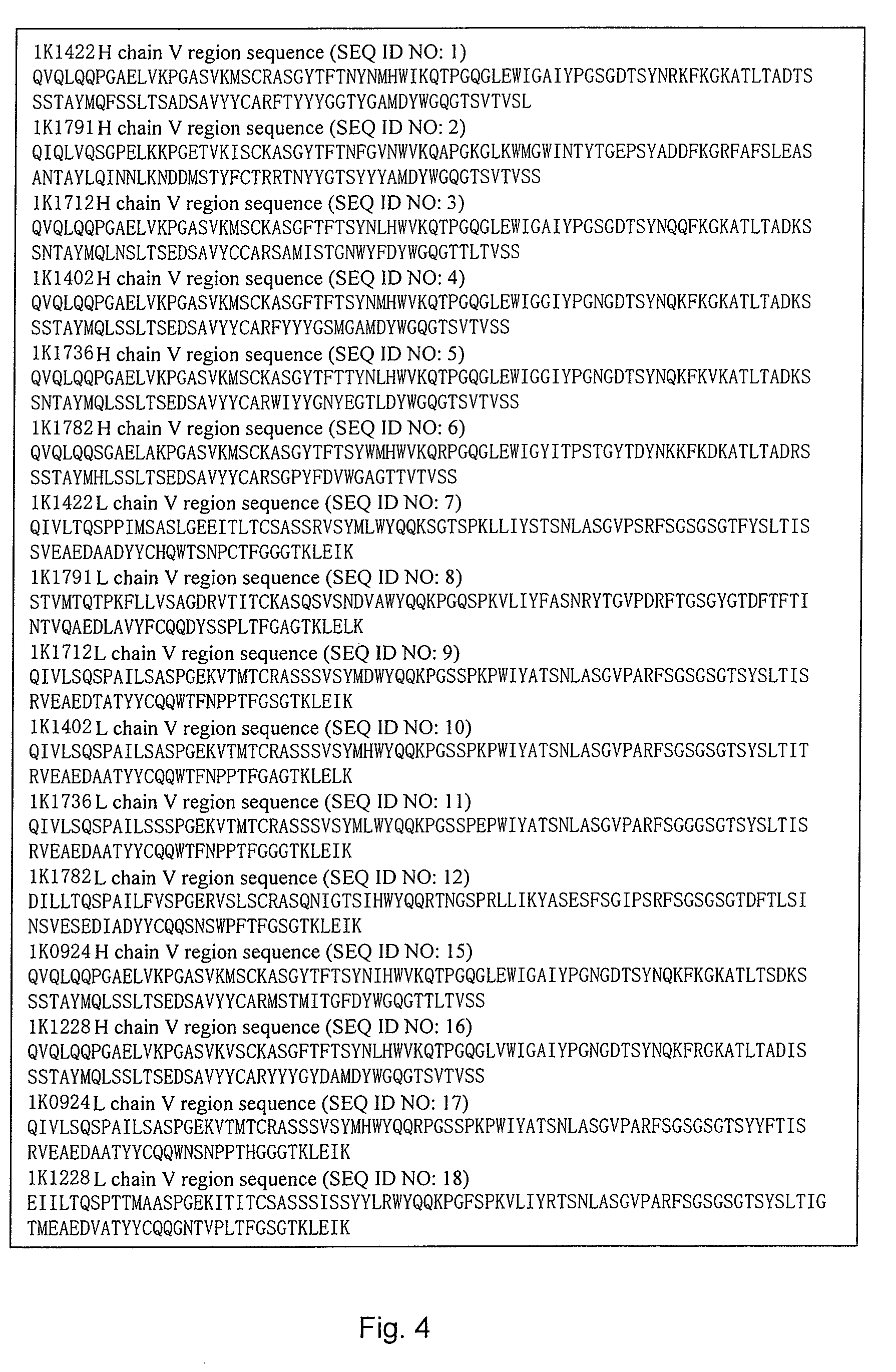Anti-CD20 monoclonal antibody
a monoclonal antibody and anti-cd20 technology, applied in the field of monoclonal antibodies, can solve the problems of difficult to obtain mature antibody-producing cells, difficult to maintain the natural three-dimensional structure under such a treatment condition, weak immunostimulating property, etc., and achieve superior biological functions.
- Summary
- Abstract
- Description
- Claims
- Application Information
AI Technical Summary
Benefits of technology
Problems solved by technology
Method used
Image
Examples
example 1
[0075]Preparation, chimerization and humanization of monoclonal antibodies directed to the CD20 antigen as well as test for characteristics of the obtained antibodies will be explained below with reference to the examples.
(1) Preparation of Immunogen for Sensitizing Mouse
[0076]The human CD20 gene was obtained from a cDNA library by using a 5′ primer of SEQ ID NO: 13 and a 3′ primer of SEQ ID NO: 14, which are specific to the gene encoding the total molecule of human CD20 (Multiple Choice cDNA human spleen, Origene Technologies, Inc., 6 Taft Court, Suite 100, Rockville, Md. 20850). Specifically, the primers shown in FIG. 3 were used. The CD20 gene was incorporated into pNOW-Ag (FIG. 2) as a high expression vector for mammalian cells, and transfected into CHO cells as the host cells. Recombinant CHO cells (CD20 / CHO cells) expressing CD20 molecules at a high level on their cell surfaces were established by FACS analysis. Cells showing 5 or more times higher fluorescence intensity compa...
PUM
| Property | Measurement | Unit |
|---|---|---|
| concentration | aaaaa | aaaaa |
| concentration | aaaaa | aaaaa |
| volume | aaaaa | aaaaa |
Abstract
Description
Claims
Application Information
 Login to View More
Login to View More - R&D
- Intellectual Property
- Life Sciences
- Materials
- Tech Scout
- Unparalleled Data Quality
- Higher Quality Content
- 60% Fewer Hallucinations
Browse by: Latest US Patents, China's latest patents, Technical Efficacy Thesaurus, Application Domain, Technology Topic, Popular Technical Reports.
© 2025 PatSnap. All rights reserved.Legal|Privacy policy|Modern Slavery Act Transparency Statement|Sitemap|About US| Contact US: help@patsnap.com



